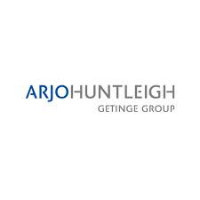Waist-Height Ratio Better Than BMI for Gauging Mortality
|
By HospiMedica International staff writers Posted on 18 Jun 2013 |
Estimates of years of life lost due to obesity were higher and more accurate when using waist-to-height ratio (WHtR) than body mass index (BMI), according to a new study.
Researchers at Oxford Brookes University (United Kingdom) compared the effect of central obesity, as measured by WHtR, and total obesity, as measured by BMI, on life expectancy, expressed as years of life lost. The researchers then created a Cox proportional hazards model using data from the Health Survey for England and the Health and Lifestyle Survey, calculating years of life lost at ages 30, 50, and 70 by comparing the life expectancies of obese patients with those lives at optimum levels of BMI and WHtR.
The researchers found that overall, mortality risk was associated with BMI, but WHtR estimates were higher and appeared to be a more accurate indicator. For example, a 30-year-old man with a BMI in the highest category—over 40 kg/m2—has a years-of-life-lost value of 10.5 years, but as measured using the WHtR method, he has a value of 16.7 years. A 30-year-old woman had a years-of-life-lost value of 5.3 years, compared with a value of 9.5 years when using WHtR. And a 50-year-old man in the most severe category of BMI has a years-of-life-lost value of 9.7 years, compared with 12.1 years when using the most severe category of WHtR. The study was presented at the European Congress on Obesity, held during May 2013 in Liverpool (United Kingdom).
“The use of WHtR in public health screening, with appropriate action, could help add years to life,” said Margaret Ashwell, PhD. “If health professionals included this simple measurement in their screening procedures, then many years of productive life could be saved.”
The WHtR of a person is defined as the person's waist circumference, divided by the person's height, and measures the distribution of body fat. Higher values of WHtR indicate higher risk of obesity-related cardiovascular diseases. For people under 40, a WHtR of over 0.5 is critical; for people in the age group between 40 and 50 the critical value is between 0.5 and 0.6, and for people over 50 the critical values start at 0.6.
Related Links:
Oxford Brookes University
Researchers at Oxford Brookes University (United Kingdom) compared the effect of central obesity, as measured by WHtR, and total obesity, as measured by BMI, on life expectancy, expressed as years of life lost. The researchers then created a Cox proportional hazards model using data from the Health Survey for England and the Health and Lifestyle Survey, calculating years of life lost at ages 30, 50, and 70 by comparing the life expectancies of obese patients with those lives at optimum levels of BMI and WHtR.
The researchers found that overall, mortality risk was associated with BMI, but WHtR estimates were higher and appeared to be a more accurate indicator. For example, a 30-year-old man with a BMI in the highest category—over 40 kg/m2—has a years-of-life-lost value of 10.5 years, but as measured using the WHtR method, he has a value of 16.7 years. A 30-year-old woman had a years-of-life-lost value of 5.3 years, compared with a value of 9.5 years when using WHtR. And a 50-year-old man in the most severe category of BMI has a years-of-life-lost value of 9.7 years, compared with 12.1 years when using the most severe category of WHtR. The study was presented at the European Congress on Obesity, held during May 2013 in Liverpool (United Kingdom).
“The use of WHtR in public health screening, with appropriate action, could help add years to life,” said Margaret Ashwell, PhD. “If health professionals included this simple measurement in their screening procedures, then many years of productive life could be saved.”
The WHtR of a person is defined as the person's waist circumference, divided by the person's height, and measures the distribution of body fat. Higher values of WHtR indicate higher risk of obesity-related cardiovascular diseases. For people under 40, a WHtR of over 0.5 is critical; for people in the age group between 40 and 50 the critical value is between 0.5 and 0.6, and for people over 50 the critical values start at 0.6.
Related Links:
Oxford Brookes University
Latest Critical Care News
- Pulse Oximeter Index Offers Non-Invasive Guides for Fluid Therapy
- Wearable Patch for Early Skin Cancer Detection to Reduce Unnecessary Biopsies
- 'Universal' Kidney to Match Any Blood Type
- Light-Based Technology to Measure Brain Blood Flow Could Diagnose Stroke and TBI
- AI Heart Attack Risk Assessment Tool Outperforms Existing Methods
- Smartphone Imaging System Enables Early Oral Cancer Detection
- Swallowable Pill-Sized Bioprinter Treats GI Tract Injuries

- Personalized Brain “Pacemakers” Could Help Patients with Hard-To-Treat Epilepsy
- Microscopic DNA Flower Robots to Enable Precision Medicine Delivery
- Origami Robots to Deliver Medicine Less Invasively and More Effectively
- Improved Cough-Detection Technology Aids Health Monitoring
- AI Identifies Children in ER Likely to Develop Sepsis Within 48 Hours
- New Radiofrequency Therapy Slows Glioblastoma Growth
- Battery-Free Wireless Multi-Sensing Platform Revolutionizes Pressure Injury Detection
- Multimodal AI to Revolutionize Cardiovascular Disease Diagnosis and Treatment
- AI System Reveals Hidden Diagnostic Patterns in Electronic Health Records
Channels
Surgical Techniques
view channel
Robotic Assistant Delivers Ultra-Precision Injections with Rapid Setup Times
Age-related macular degeneration (AMD) is a leading cause of blindness worldwide, affecting nearly 200 million people, a figure expected to rise to 280 million by 2040. Current treatment involves doctors... Read more
Minimally Invasive Endoscopic Surgery Improves Severe Stroke Outcomes
Intracerebral hemorrhage, a type of stroke caused by bleeding deep within the brain, remains one of the most challenging neurological emergencies to treat. Accounting for about 15% of all strokes, it carries... Read morePatient Care
view channel
Revolutionary Automatic IV-Line Flushing Device to Enhance Infusion Care
More than 80% of in-hospital patients receive intravenous (IV) therapy. Every dose of IV medicine delivered in a small volume (<250 mL) infusion bag should be followed by subsequent flushing to ensure... Read more
VR Training Tool Combats Contamination of Portable Medical Equipment
Healthcare-associated infections (HAIs) impact one in every 31 patients, cause nearly 100,000 deaths each year, and cost USD 28.4 billion in direct medical expenses. Notably, up to 75% of these infections... Read more
Portable Biosensor Platform to Reduce Hospital-Acquired Infections
Approximately 4 million patients in the European Union acquire healthcare-associated infections (HAIs) or nosocomial infections each year, with around 37,000 deaths directly resulting from these infections,... Read moreFirst-Of-Its-Kind Portable Germicidal Light Technology Disinfects High-Touch Clinical Surfaces in Seconds
Reducing healthcare-acquired infections (HAIs) remains a pressing issue within global healthcare systems. In the United States alone, 1.7 million patients contract HAIs annually, leading to approximately... Read moreHealth IT
view channel
Printable Molecule-Selective Nanoparticles Enable Mass Production of Wearable Biosensors
The future of medicine is likely to focus on the personalization of healthcare—understanding exactly what an individual requires and delivering the appropriate combination of nutrients, metabolites, and... Read moreBusiness
view channel
Philips and Masimo Partner to Advance Patient Monitoring Measurement Technologies
Royal Philips (Amsterdam, Netherlands) and Masimo (Irvine, California, USA) have renewed their multi-year strategic collaboration, combining Philips’ expertise in patient monitoring with Masimo’s noninvasive... Read more
B. Braun Acquires Digital Microsurgery Company True Digital Surgery
The high-end microsurgery market in neurosurgery, spine, and ENT is undergoing a significant transformation. Traditional analog microscopes are giving way to digital exoscopes, which provide improved visualization,... Read more
CMEF 2025 to Promote Holistic and High-Quality Development of Medical and Health Industry
The 92nd China International Medical Equipment Fair (CMEF 2025) Autumn Exhibition is scheduled to be held from September 26 to 29 at the China Import and Export Fair Complex (Canton Fair Complex) in Guangzhou.... Read more














